最近在极客时间上面学习丁雪丰老师的《玩转 Spring 全家桶》,看到一个在application.properties 里面生成随机数的例子,觉得很厉害,带着崇拜的心情去阅读了一下Spring的源码,总算搞清楚了它是怎么工作的,阅读优秀的源代码是一个很不错的学习方式,这篇文章就是记录一下这个学习的过程。
还是先通过示例来进入学习
首先我们建一个springboot的工程,入口程序如下, 就是打印出两个从配置文件中定义的value
@SpringBootApplication
@Slf4j
public class PropertySourceDemoApplication implements ApplicationRunner {
@Value("${property.demo.test}")
private String hello;
@Value("${property.demo.random}")
private int random_value;
public static void main(String[] args) {
SpringApplication.run(PropertySourceDemoApplication.class, args);
}
@Override
public void run(ApplicationArguments args) throws Exception {
log.info("{} {}", hello, random_value);
}
}
配置文件 application.properties
property.demo.random=${random.int}
property.demo.test=hello
程序输入出为 "hello -14137621", 这个-14137621就是我们生成的随机数
那么这个功能是怎么在spring-boot实现的呢?
准备阶段
首先我们需要工具类,我们自己可以设计一下,如果我们需要完成这项任务,那么我们需要两个最基本的类,一个是随机数生成类org.springframework.boot.env.RandomValuePropertySource,一个是读取配置文件类 org.springframework.boot.env.PropertiesPropertySourceLoader。我们来看下这两个类的代码。
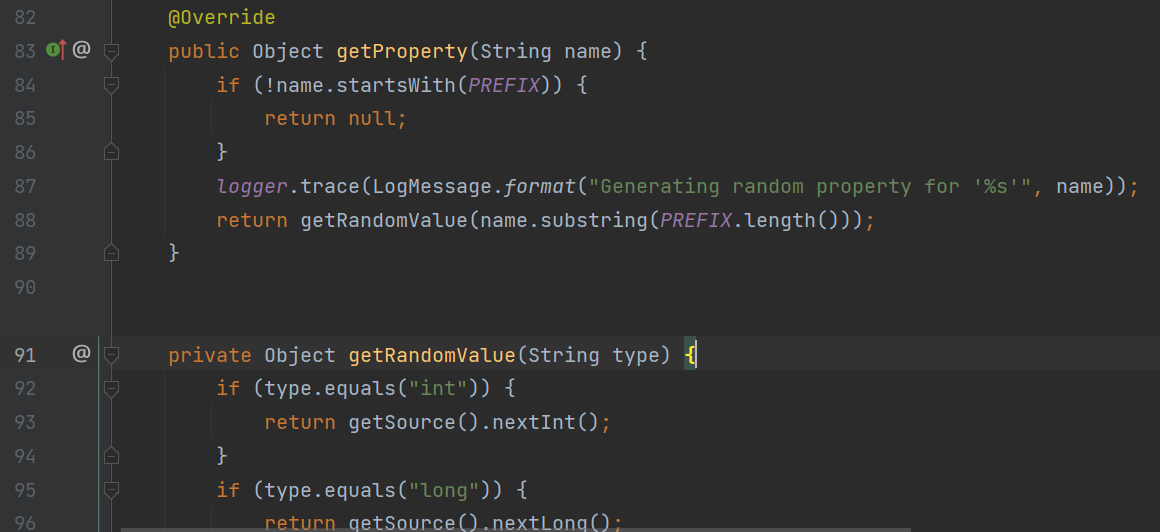
上图是RandomValuePropertySource, 我们可以看到它的getProperty方法就是看name是不是以random开头,是的话就生成随机数返回,这就是我们为什么值为${random.int}
再来看PropertiesPropertySourceLoader
public class PropertiesPropertySourceLoader implements PropertySourceLoader {
private static final String XML_FILE_EXTENSION = ".xml";
@Override
public String[] getFileExtensions() {
return new String[] { "properties", "xml" };
}
@Override
public List<PropertySource<?>> load(String name, Resource resource) throws IOException {
List<Map<String, ?>> properties = loadProperties(resource);
if (properties.isEmpty()) {
return Collections.emptyList();
}
List<PropertySource<?>> propertySources = new ArrayList<>(properties.size());
for (int i = 0; i < properties.size(); i++) {
String documentNumber = (properties.size() != 1) ? " (document #" + i + ")" : "";
propertySources.add(new OriginTrackedMapPropertySource(name + documentNumber,
Collections.unmodifiableMap(properties.get(i)), true));
}
return propertySources;
}
@SuppressWarnings({ "unchecked", "rawtypes" })
private List<Map<String, ?>> loadProperties(Resource resource) throws IOException {
String filename = resource.getFilename();
List<Map<String, ?>> result = new ArrayList<>();
if (filename != null && filename.endsWith(XML_FILE_EXTENSION)) {
result.add((Map) PropertiesLoaderUtils.loadProperties(resource));
}
else {
List<Document> documents = new OriginTrackedPropertiesLoader(resource).load();
documents.forEach((document) -> result.add(document.asMap()));
}
return result;
}
}
通过阅读这个代码我们可以看出或者猜测,它就是把后缀名是properties或者xml的文件读到内存中,实际上也是这样的。
有了这两个类,剩下的就是如何把它们组织起来,这是spring强大的地方,也是复杂的地方。
这里不同版本可能代码不一样,但是大同小异吧,我使用的是springboot 3.0.0。
这里把代码的组织结构贴出来
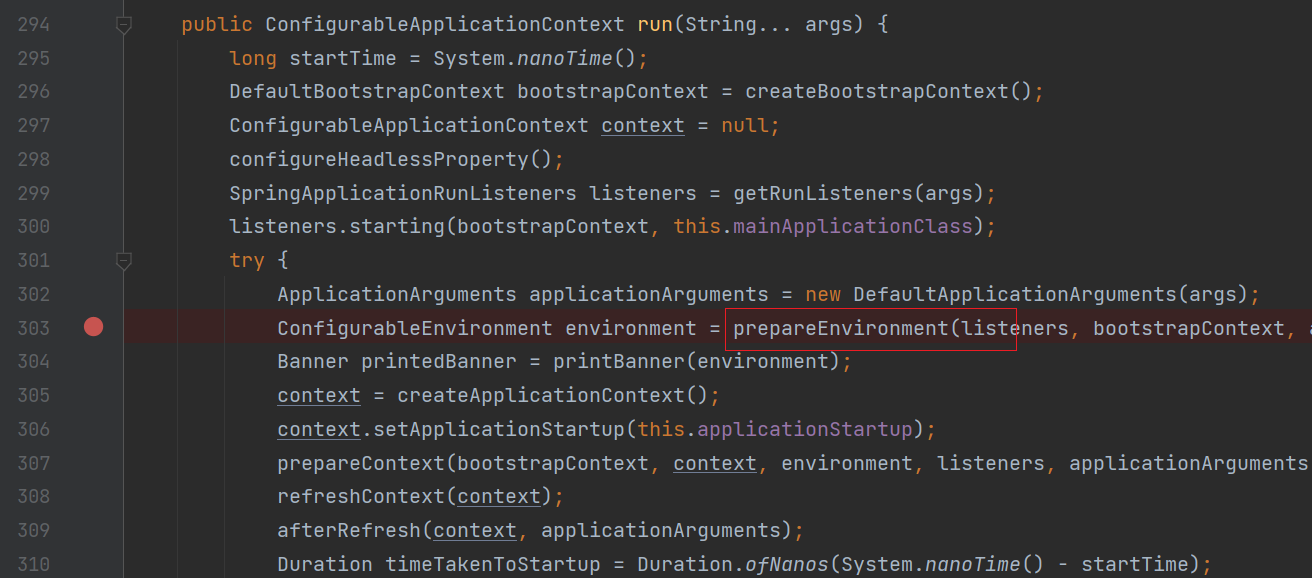




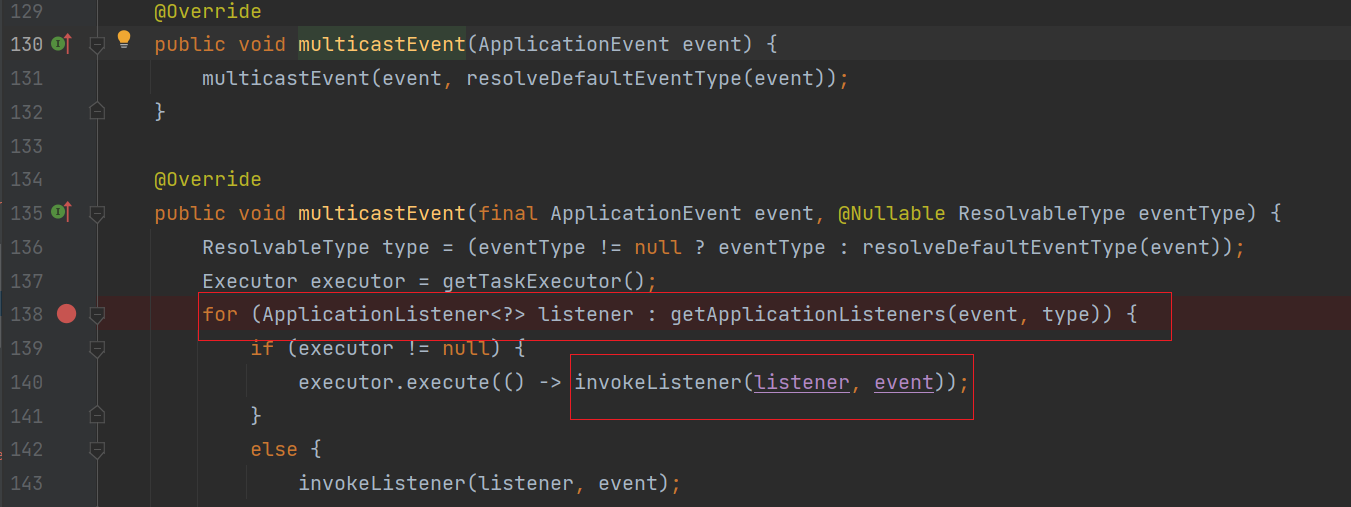
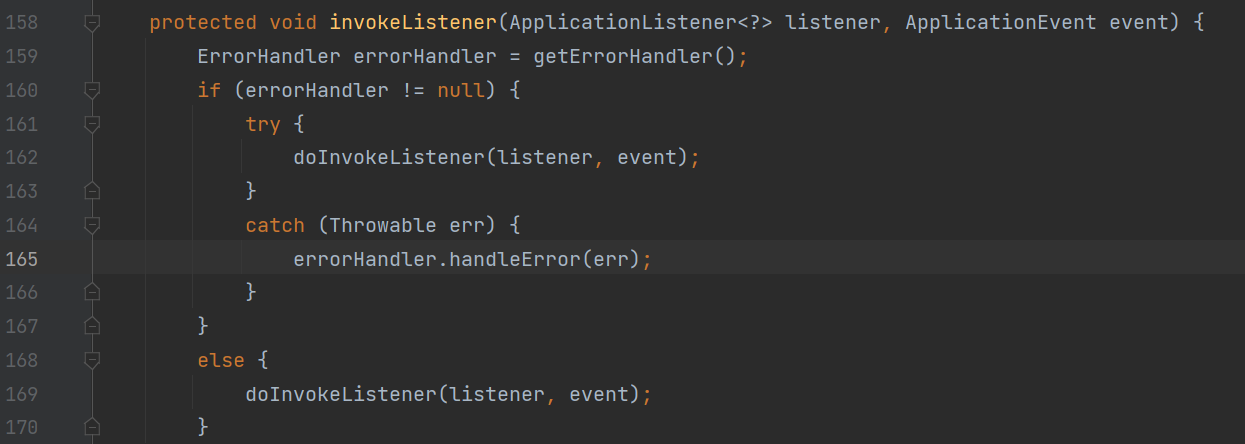

最后我们可以看到执行了ApplicationListener.onApplicationEvent.
我们打开spring.factories 中看到EnviormentPostProcessorApplicationListener实现了这个接口

打开它的代码可以看到
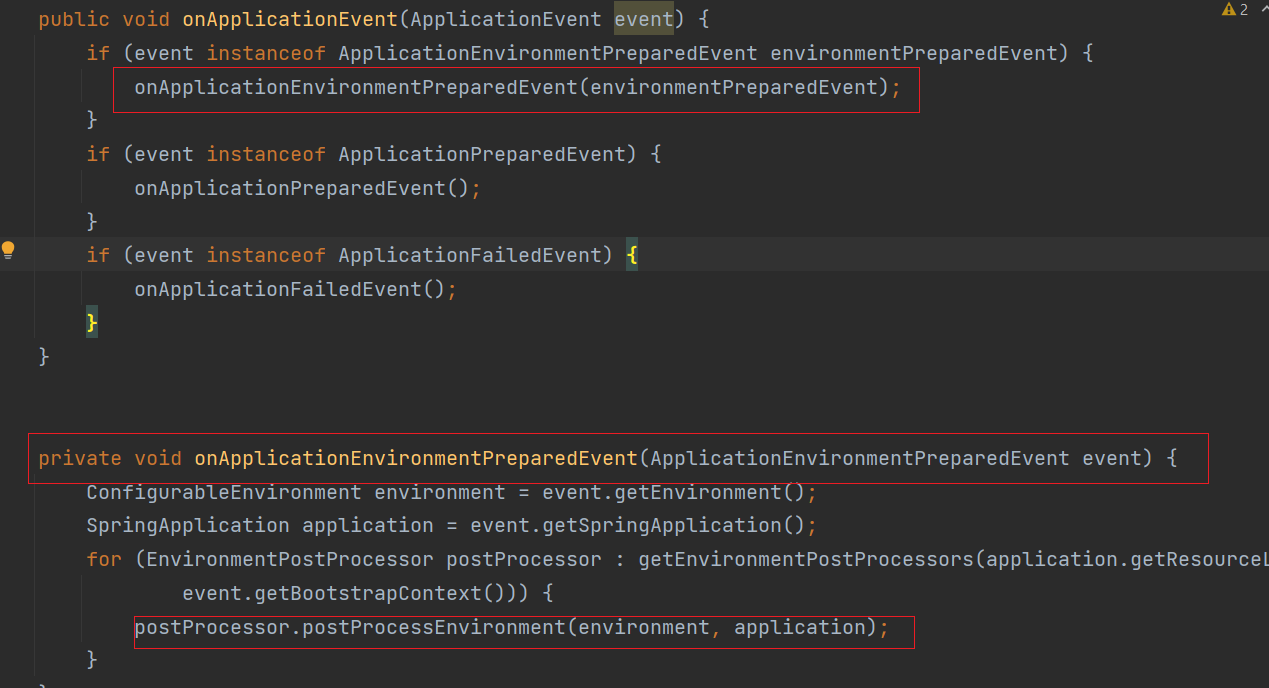
最后到了EnvironmentPostProcessor.postPr